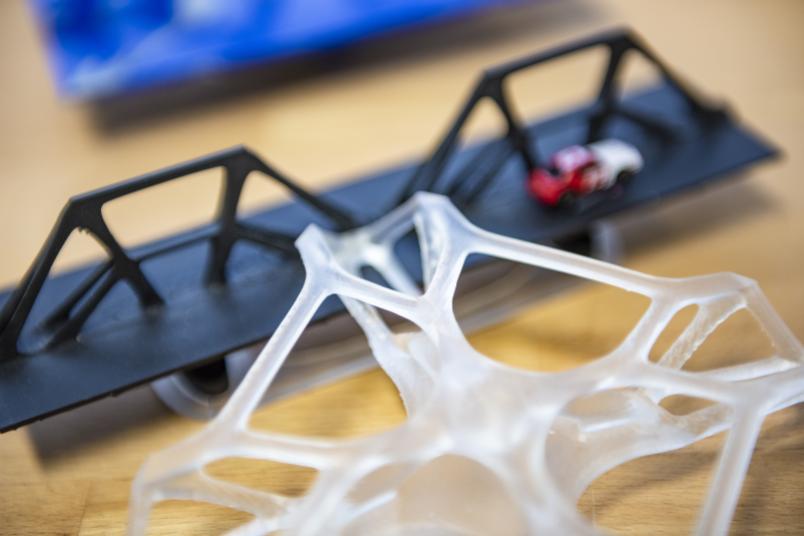
Mechanics
Structures and components that could have grown naturally
The shapes of the components optimised by an algorithm appear strangely familiar. This is no coincident: they undergo an evolution process comparable to biological processes.
Components should generally be cost-effective, long-lasting and robust. Engineers know from experience how they are designed. But could they be a bit better? To answer this question, Dr. Philipp Junker from the Chair of Continuum Mechanics and Dr. Dustin Jantos from the Institute of Mechanics of Materials at Ruhr-Universität Bochum (RUB) are using an algorithm that they have developed for what is known as topology optimisation. They specify a space in which the planned component, such as a bridge, should be created. The forces that are also to be expected in reality are then exerted on the component virtually. Through the calculation, the bridge then emerges out of the space. Rubin, the scientific magazine from RUB, reports on this.
Shapes reminiscent of bones or plants
“This is a kind of evolutionary process,” says Philipp Junker. The structure remains thicker where particularly high pressure needs to be absorbed. It can remain thinner wherever less strong forces are exerted, which saves material.
“It is interesting that natural-looking shapes are formed from this that are reminiscent, for instance, of bones or parts of plants,” says the researcher. Junker and Jantos use a 3D printer to turn the computed components into real models. “Before the calculation, you don’t know what shape is going to come out,” says Dustin Jantos. “But the shapes that come out are always reasonable.”
What sets the algorithm apart is that the calculation method can also incorporate complex material properties into the simulation. “You naturally want to build cost-effectively and, as concrete is cheaper than steel, for instance, you would prefer to use it,” explains Dustin Jantos. Concrete displays a high degree of stability with regard to pressure. However, it is less good at withstanding tensile stress. Parts of a structure that need to withstand such tensile stress should thus be made from steel instead or the concrete must be reinforced with steel. The algorithm can help to optimally balance the proportions of various materials and the amount used for each. The calculation also takes into account diverse material properties. While steel, for instance, behaves the same in all directions under stress, wood withstands different forces under stress in its direction of growth than in other directions. The orientation of such direction-dependent materials along with other material properties can also be optimised by the algorithm.